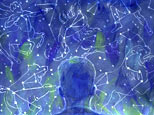 By Hollywood standards, Philip K. Dick’s “A Scanner Darkly” might be the eccentric author’s most inadaptable work. The robotic intrigue of “Blade Runner” and the crime-stopping fortune-telling of “Minority Report” attracted studios and audiences alike, but this time the challenge lies in producing 100 minutes of palatable cinema with only Dick’s piecemeal storytelling and bizarre characters as source material. By applying his own brand of philosopher filmmaking, director Richard Linklater has created something unique and loyal to the author’s vision.
By Hollywood standards, Philip K. Dick’s “A Scanner Darkly” might be the eccentric author’s most inadaptable work. The robotic intrigue of “Blade Runner” and the crime-stopping fortune-telling of “Minority Report” attracted studios and audiences alike, but this time the challenge lies in producing 100 minutes of palatable cinema with only Dick’s piecemeal storytelling and bizarre characters as source material. By applying his own brand of philosopher filmmaking, director Richard Linklater has created something unique and loyal to the author’s vision.
Decidedly his most personal work–Dick’s struggle with addiction is well-documented–“A Scanner Darkly” centers on a not-too-distant-future America, one in which a disquieting number of people spy on friends and neighbors in an effort to curb the nation’s addiction to an illegal drug called Substance D. The pervasive use of a brain-altering narcotic combined with a large chunk of the population employed as narcs makes for a film rife with perverse conspiracy theories and nonsensical diatribes.
As such, the film, at times, plays like a paranoid fantasy realized. By vague impetus, addict Bob Arctor (Keanu Reeves) studies the day-to-day activities of his girlfriend and two housemates, reports his findings anonymously to the authorities, and isolates himself in order to keep his covert activities as mysterious as the film’s quietly unfolding plot.
Done in what is becoming Linklater’s trademark style–a computerized rotoscope-like two-dimensional animation–the film fluidly combines the elements of a drug-induced delusional episode with the everyday, making for an odd, near-future world where the line dividing reality and absurdity is commonly traversed by an alarming number of people–like Jim Barris (Robert Downer, Jr.), Arctor’s roommate and centerpiece to the film’s peculiarity. Downey’s uncanny ability to speak with the speed of an auctioneer sans coherence is easily one of the most impressive displays of verbal diarrhea ever captured on celluloid. So convincing are his character’s erratic actions and bizarre remarks that I can’t help but wonder just how much of the actor’s drug-addled past is unfurling on screen. No matter what his source of inspiration, Downey’s performance should not go unnoticed.
Since the oral meanderings of some of its characters are so difficult to follow, finding the point of Linklater’s somewhat loose and tangential film is no simple matter. But this has a purpose: Both the author and the filmmaker favor intellectual provocation over a simple storyline. Unfortunately, much of what the drug-addicted characters say and do is unintelligible and consequently deemed unimportant, making it difficult to maintain focus. As entertaining as Jim Barris is, the repetitive nature of his antics grows tedious and exhausting.
That’s not to say this results in poor filmmaking; Linklater deftly paints a bleak yet avoidable future, one in which the omnipresence of authority and the ostensible lack of privacy are more than enough to arouse an audience’s intellect. Add to that impressive performances and imagery working together to blur the lines between truth and delusion, and what’s left is a visually and cerebrally gratifying film.


